
Fraunhofer IWES is developing a next-generation floating lidar system (FLS) which satisfies industry requirements in terms of reliability and practicability. BMWE, 02/2021 - 07/2026
more info
Designing and constructing offshore wind farms demands comprehensive knowledge of the environmental conditions at the selected location. This is the only way for the project to be a financial success. Fraunhofer IWES carries out wind measuring and modeling campaigns as well as the investigation of geological sub-surface characteristics and seismic surveys of the subsoil for offshore wind farms. Innovative technologies tried and tested in feasibility studies, data analyses, and actual offshore deployments are employed for sound site investigations.
Fraunhofer IWES has extensive experience in the development of offshore wind farms, from modeling wind conditions and wind measurements to sub-surface investigation and geological ground models. CFD (computational fluid dynamics) models are employed to simulate the offshore wind conditions according to relevant atmospheric characteristics. The effects of existing wind farms are also included. Floating lidar systems are employed for the offshore wind measuring campaigns. They meet the highest international standards and also offer innovative services for wind farm development.
For sub-surface investigation, Fraunhofer IWES has developed 2D and 3D geological investigation technologies with ultra-high-resolution multichannel seismics and brought them to market maturity. All wind farm areas in Germany that were centrally pre-investigated were measured by Fraunhofer IWES using this method. A further special field of application is boulder detection performed with the aid of of patented refraction seismic methods.
Effective project and risk management forms the basis for the successful and cost-efficient planning, construction and operation of offshore wind farms. During the planning and implementation phase, Fraunhofer IWES offers project planning and weather risk analyses in order to identify and assess potential risks at an early stage. In addition, Fraunhofer IWES supports partners in the development of new technologies to effectively exploit the potential of direct offshore generation of green hydrogen and other Power-to-X products.

Fraunhofer IWES is developing a next-generation floating lidar system (FLS) which satisfies industry requirements in terms of reliability and practicability. BMWE, 02/2021 - 07/2026
more info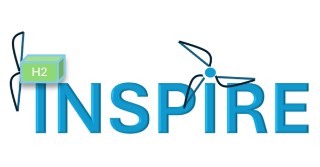
The project partners are developing concepts for an innovative design and the optimal operation of offshore wind turbines and electrolyzers for the production of green hydrogen with simultaneous reduction of the use of rare earth elements. BMFTR in the scope of SBEP, 05/2024 – 04/2027
more info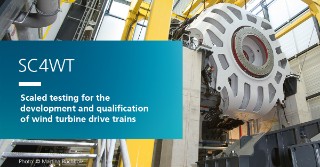
The project partners are developing a generally applicable guideline for the design of scaled test specimens and the performance of scaled testing of wind energy drive train systems and components. BMWE, 06/2025 – 05/2028
more info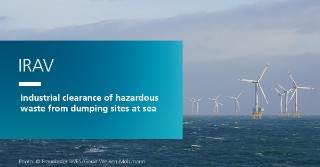
The IRAV collaborative project is developing solutions for system gaps in the detection, classification, salvage, and disposal of hazardous waste in large marine areas, including for the construction of offshore wind farms. BMWE, 06/2023 - 11/2025
more info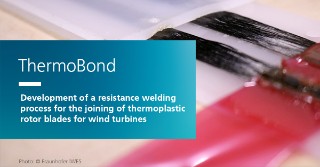
The project partners are developing a novel plastic welding process for the joining of fiber-reinforced thermoplastic resins for the industrial production of rotor blades. Central Innovation Program for SMEs (ZIM) of the BMWE, 12/2023 - 11/2025
more info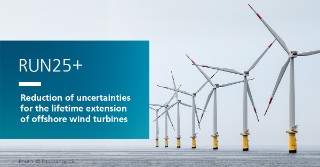
The project partners are developing a decision-making basis for the efficient continued operation of offshore wind farms that combines site-specific yield and reliability predictions. BMWE, 06/2024 – 05/2027
more info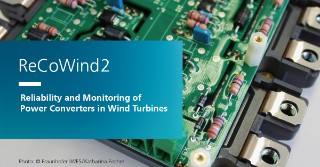
The project partners are analyzing the causes of power converter failure and developing methods for condition-based maintenance. BMWE, 03/2023 – 02/2026
more info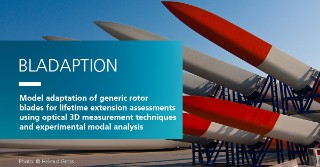
The project partners are developing a method for the preparation of reliable lifetime extension assessments for the continued operation of wind turbines. BMWE, 08/2023–07/2026
more info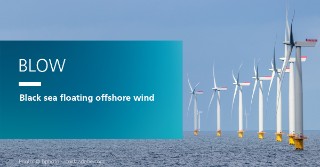
The project partners are developing the design and the industrial manufacturing methods for a floating offshore wind turbine optimized for medium wind speeds. Horizon Europe, 01/2023 – 12/2027
more info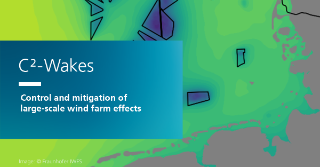
The project partners are investigating possibilities for reducing large-scale wake effects of offshore wind farms and developing recommendations for action for authorities and industry. BMWE, 05/2023 – 04/2026
more info